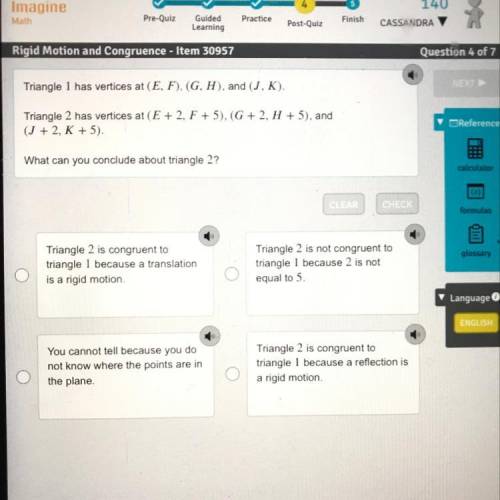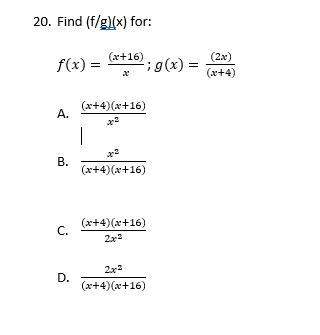
Mathematics, 07.10.2020 16:01 abolton04
Triangle 1 has vertices at (E, F). (GH), and (J, K).
Triangle 2 has vertices at (E +2, F + 5), (G+2, H + 5), and
(J + 2, K + 5).
What can you conclude about triangle 2?
PLEASE TRY
PHOTO ABOVE


Answers: 1


Other questions on the subject: Mathematics

Mathematics, 21.06.2019 16:30, mimithurmond03
Question 5 spring semester final exam math evaluate
Answers: 2

Mathematics, 21.06.2019 18:30, nativebabydoll35
How do you solving the solution of each system using elimination?
Answers: 2


Mathematics, 21.06.2019 22:00, fatherbamboo
Worth 100 points need the answers asap first row -x^2 2x^2 (x/2)^2 x^2 x is less than 2 x is greater than 2 x is less than or equal to 2 x is greater than or equal to 2 second row -5 -5/2 4 5 •2 is less than x& x is less than 4 •2 is less than or equal to x & x is less than or equal to 4 •2 is less than or equal to x& x is less than 4 •2 is less than x& x is less than or equal to 4
Answers: 2
You know the right answer?
Triangle 1 has vertices at (E, F). (GH), and (J, K).
Triangle 2 has vertices at (E +2, F + 5), (G+2...
Questions in other subjects:


English, 06.10.2019 14:30



Health, 06.10.2019 14:30



Mathematics, 06.10.2019 14:30

History, 06.10.2019 14:30




